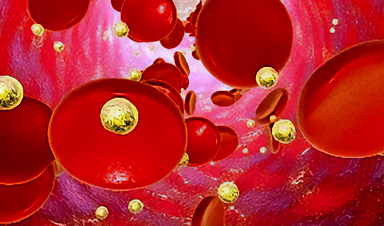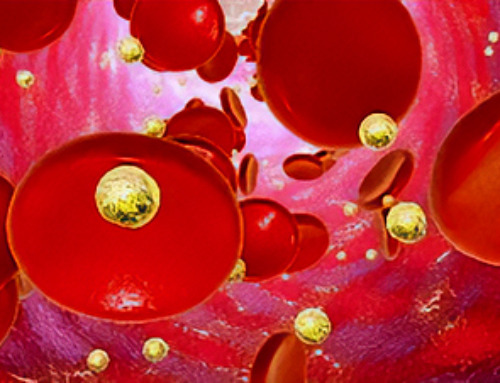Researchers from India have shared an eco-friendly method for the fabrication of metal nanoparticles in their latest article available as a pre-proof in the journal Environmental Nanotechnology, Monitoring & Management.
Importance of Metal Nanoparticles
Metal nanoparticles in simple words could be defined as nanoscale derivatives of pure metals such as gold, thallium, and silver, or their compounds. Metallic nanoparticles (MNPs) feature a metal core formed of synthetic metal or metal oxide that is generally surrounded by an organic or inorganic substance or metal oxide shell.
The production of noble metallic nanoparticles has evolved into an enthralling process of scientific study. Because of their exceptional toxicological and photonic characteristics, silver and gold nanoparticles have received a great deal of attention, opening the way for extraordinary applicability in electromagnetic, semiconductors, photonics, biomedical, biosensing, catalytic, and medicinal domains.
Preparation Methods
Metal nanoparticles are often produced by reducing matching metal salt solutions with reduction enhancing substances such as sodium borohydride and citrate under severe experimental parameters. Furthermore, encapsulating entities are required, with amine or thiol-containing organic ligands and other surfactants being used to create these nanoparticles.
Previously, phyto-mediated reduction processes employing plant extracts have been used in the manufacture of metal nanoparticles to fulfill the green standard in reactions by avoiding hazardous chemicals.
Despite significant progress in the manufacture and usage of MNPs across the world, there is still a significant gap in information about the toxicity-related consequences of these on health and the environment.
Why Carbon Dots (CDs) are Important?
Carbon dots (CDs), a recent addition to the nano-carbon family distinguished by carbon nucleus related functional group, possesses exceptional biochemical and optoelectronic properties features such as adjustable fluorescence, high water dispersion, low cytotoxicity, and excellent stability.
C-dots are a novel type of luminous small-carbon nanocomposites with particle sizes less than 10 nm. Because of these characteristics, they have emerged as attractive candidates in detection, catalyst supports, bio-imaging, illumination, biomedical applications, and other domains.
Future research will focus on the creation of various morphologies, dimensions, and target-specific carbon dots. The synthetic paths to CDs, like any other nanomaterial, are loosely classed as top-down and bottom-up processes.
Greener Methods of Carbon Dot Synthesis
A great deal of attention has been dedicated to the implementation of green solutions for manufacturing CDs from affordable environmental assets in a greener and environmentally friendly manner.
Plant sources such as peppermint, coriander, banana peel, lemon, and others have been used as an alternative to synthetic antecedents in the manufacture of carbon nanodots.
CDs have recently been found for their reducing nature as well. Despite the fact that CDs have been discovered as a sustainable reduction tool for noble metal nanoparticles production via environmental initiatives, this topic is still in its infancy.
In the present study, carbon dots generated from the foliage of organic herbs, Plectranthus amboinicus (PA-CDs) and Leucas lavandulifolia (LA-CDs), have shown excellent reduction status.
News
Nanocrystals Carrying Radioisotopes Offer New Hope for Cancer Treatment
The Science Scientists have developed tiny nanocrystal particles made up of isotopes of the elements lanthanum, vanadium, and oxygen for use in treating cancer. These crystals are smaller than many microbes and can carry isotopes of [...]
New Once-a-Week Shot Promises Life-Changing Relief for Parkinson’s Patients
A once-a-week shot from Australian scientists could spare people with Parkinson’s the grind of taking pills several times a day. The tiny, biodegradable gel sits under the skin and releases steady doses of two [...]
Weekly injectable drug offers hope for Parkinson’s patients
A new weekly injectable drug could transform the lives of more than eight million people living with Parkinson's disease, potentially replacing the need for multiple daily tablets. Scientists from the University of South Australia [...]
Most Plastic in the Ocean Is Invisible—And Deadly
Nanoplastics—particles smaller than a human hair—can pass through cell walls and enter the food web. New research suggest 27 million metric tons of nanoplastics are spread across just the top layer of the North [...]
Repurposed drugs could calm the immune system’s response to nanomedicine
An international study led by researchers at the University of Colorado Anschutz Medical Campus has identified a promising strategy to enhance the safety of nanomedicines, advanced therapies often used in cancer and vaccine treatments, [...]
Nano-Enhanced Hydrogel Strategies for Cartilage Repair
A recent article in Engineering describes the development of a protein-based nanocomposite hydrogel designed to deliver two therapeutic agents—dexamethasone (Dex) and kartogenin (KGN)—to support cartilage repair. The hydrogel is engineered to modulate immune responses and promote [...]
New Cancer Drug Blocks Tumors Without Debilitating Side Effects
A new drug targets RAS-PI3Kα pathways without harmful side effects. It was developed using high-performance computing and AI. A new cancer drug candidate, developed through a collaboration between Lawrence Livermore National Laboratory (LLNL), BridgeBio Oncology [...]
Scientists Are Pretty Close to Replicating the First Thing That Ever Lived
For 400 million years, a leading hypothesis claims, Earth was an “RNA World,” meaning that life must’ve first replicated from RNA before the arrival of proteins and DNA. Unfortunately, scientists have failed to find [...]
Why ‘Peniaphobia’ Is Exploding Among Young People (And Why We Should Be Concerned)
An insidious illness is taking hold among a growing proportion of young people. Little known to the general public, peniaphobia—the fear of becoming poor—is gaining ground among teens and young adults. Discover the causes [...]
Team finds flawed data in recent study relevant to coronavirus antiviral development
The COVID pandemic illustrated how urgently we need antiviral medications capable of treating coronavirus infections. To aid this effort, researchers quickly homed in on part of SARS-CoV-2's molecular structure known as the NiRAN domain—an [...]
Drug-Coated Neural Implants Reduce Immune Rejection
Summary: A new study shows that coating neural prosthetic implants with the anti-inflammatory drug dexamethasone helps reduce the body’s immune response and scar tissue formation. This strategy enhances the long-term performance and stability of electrodes [...]
Scientists discover cancer-fighting bacteria that ‘soak up’ forever chemicals in the body
A family of healthy bacteria may help 'soak up' toxic forever chemicals in the body, warding off their cancerous effects. Forever chemicals, also known as PFAS (per- and polyfluoroalkyl substances), are toxic chemicals that [...]
Johns Hopkins Researchers Uncover a New Way To Kill Cancer Cells
A new study reveals that blocking ribosomal RNA production rewires cancer cell behavior and could help treat genetically unstable tumors. Researchers at the Johns Hopkins Kimmel Cancer Center and the Department of Radiation Oncology and Molecular [...]
AI matches doctors in mapping lung tumors for radiation therapy
In radiation therapy, precision can save lives. Oncologists must carefully map the size and location of a tumor before delivering high-dose radiation to destroy cancer cells while sparing healthy tissue. But this process, called [...]
Scientists Finally “See” Key Protein That Controls Inflammation
Researchers used advanced microscopy to uncover important protein structures. For the first time, two important protein structures in the human body are being visualized, thanks in part to cutting-edge technology at the University of [...]
AI tool detects 9 types of dementia from a single brain scan
Mayo Clinic researchers have developed a new artificial intelligence (AI) tool that helps clinicians identify brain activity patterns linked to nine types of dementia, including Alzheimer's disease, using a single, widely available scan—a transformative [...]





















